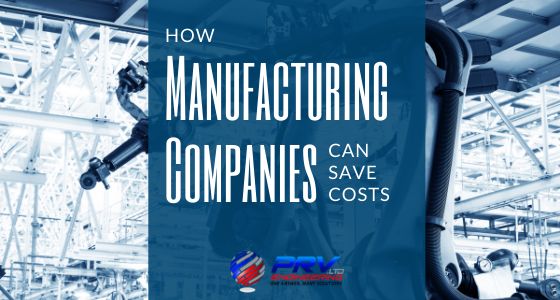Metal fabrication is the process of cutting steel, aluminium or other materials into shapes to produce certain products. The metal fabrication process usually starts with a design that has been drawn up or otherwise conceived by a designer or an engineer. This design is then translated into blueprints by the contractor or engineer and then used to make the desired product. In this article, we look at some of the materials used during the fabrication process and how it all works.
Over the last few hundred years, our world has changed in unimaginable ways. So many technologies exist today that weren’t even a thought back then with British innovations leading from the front. Scientists, inventors and engineers of yesteryear have made many significant breakthroughs and here are some of the greatest British innovations of all time.
In our current technology-driven world, innovation has changed how brands and businesses operate. Many traditional development strategies have shifted toward implementing new manufacturing technologies to ensure sustained competitiveness, including rapid prototyping and software development. Many start-ups and established businesses are fast adopting these modern methodologies considering all the benefits.
Deep hole drilling (DHD) – or deep hole machining (DHM) – is a residual stress measurement technique often referred to as gun drilling. It’s a prominent method in engineering materials and components used across numerous sectors, including automotive and vehicle construction, aerospace and renewable energy. Deep hole drilling is also used in die and mould making and hydraulics or pneumatic components.
Today, there’s a growing demand to put gun drilling into a multi-tasking format, just as you would with common machining techniques such as milling, turning and gear-cutting on one platform. With deep hole machining being a multi-task platform you can create opportunities to offer an incredibly high-quality finished product.
There’s no denying that Covid-19 is responsible for creating loads of pressure on the manufacturing sector over the last eight months. This is mainly due to production slowdowns, restrictions on employee movement (social distancing) and changing demands. As a result, manufacturing companies have had to rethink business models and operations with many looking at digital technologies such as IoT.
With manufacturers striving toward increasing equipment efficiency, production quality, resilient and intelligent supply chains, IoT has become a key player. Microsoft, for example, is leveraging its knowledge and technical expertise to make this technology more readily available. Combining in-depth industry knowledge and expertise has already proven tangible as proven by the UK Ventilator Challenge.
Recommended: ‘How Manufacturers Can Plan For Covid-19 Disruptions’
Preparing For IoT In Manufacturing
Due to the continued impact of the pandemic, the UK manufacturing sector is looking to drive innovation through digital technology. It will help address key challenges in operational efficiency, supply chain management as well as workforce and sustainability issues. They can prepare by:
- adapting their operations around digital technologies
- actively integrating their value chain to the entire supply chain
- increasing efficiency and capacity of production
Pundits within the manufacturing sector believe that Industrial IoT (IIoT) will play a pivotal role. It not only helps with improving efficiency and monitoring quality but also better factory safety and cost reduction. This gives companies access to enhanced capabilities for asset tracking and preventing expensive shutdowns of machinery.
Industrial IoT Drives Long-term Momentum
By taking small steps to improve efficiency, the future of manufacturing looks promising as it connects siloed processes to more connected ecosystems. This will drive long-term momentum even in the face of current (and future) challenges. Truth is, manufacturing organisations are embracing emerging IoT technologies much faster than other sectors.
In a survey of nearly 600 manufacturers from around the world, some have reported fewer barriers to add edge computing to their IoT systems. Also, 73% said they have a strategy in place for the use of digital twins within their IoT solutions. Digital twins are replicas of potential and actual physical assets, processes, people, places, systems and devices (source: Wikipedia).
Recommended: ‘What Is Edge Computing?’
Investing In The Future Of Manufacturing For Scalability
There are still many challenges manufacturers need to address, especially around complexity and resourcing within an organisation. As previously mentioned, Microsoft is working on simplifying and securing capabilities to further democratise IoT which will certainly help.
The software giant has committed to “invest $5B in IoT (Internet of Things) and intelligent edge – technology that is accelerating ubiquitous computing and bringing an unparalleled opportunity for transformation across industries.” (Source: Microsoft.com)
This means developers are welcomed by a rapidly growing number of services and features. These will provide open, flexible choices for development, securing of data and achieving rapid global growth when companies need to scale.
Recommended: ‘Read the full IoT Signals Edition 2 Manufacturing Report’
What Trends Are Driving Industrial IoT?
According to the manufacturers, the top reported uses for IoT in 2020 are to monitor production flow, automate industrial processes, production planning and scheduling. As we’ve discovered, with plans to adopt IoT in manufacturing, several challenges and trends are influencing the process.
For many manufacturers, the primary driver for adopting IoT is the improved efficiency in operations. Not to mention expanded production capacities and better employee productivity. In some instances, more manufacturers are using AI as part of their IoT solutions. Here, 77% reported further improvement in efficiency when using AI in primary or secondary uses.
One of the main benefits of implementing IoT and AI is improved predictive maintenance. Many have also confirmed that they are using AI to enhance the online user experience by using customer service bots.

Addressing The Skills Gap Within The Industrial Internet of Things (IIoT)
Many of the surveyed manufacturers agree that bridging the skills gap is a top priority and are actively looking for employees with a wide range of technical abilities. This especially includes system architects and cloud developers who can successfully implement IoT.
For manufacturers to successfully navigate IIoT, they need employees who can maintain legacy IT while building new systems or maintaining IoT technology. The biggest challenge to adopting IoT on a larger scale is the lack of skilled workers and budgeting, especially for discrete manufacturers.
The continued growth of smart devices, networks and connections translates into skills gaps, especially when left unchecked. In a different study from Inmarsat in 2017, more than three-quarters of surveyed companies believed they needed more high-level IoT specialists.
Final Thoughts
As the industry matures, so do organisations’ requirements and expectations. Whilst there’s been significant improvements in recent years, there is still a long way to go before we see IoT adoption on a mass scale.
Looking ahead, government institutions must get involved with funding and training, where possible. Companies must let potential employees know they are willing to provide additional training and to invest in them by building on their current skillsets.
Senior leadership and management must also step up tothe plate and make sure everyone has the right attitude. If everyone shares the same vision, and the team already has good core skills, IoT adoption and training should be easier to implement.
For more interesting updates on all things engineering, manufacturing and technology, follow our blog or visit our website. You can also join the conversation on social media using the hashtag #PRVtech.
Manufacturing companies must be flexible and resourceful to ensure they survive as C-19 is not going away anytime soon. They must find new ways to tap into the knowledge of experienced workers whilst spending time and resources on developing the more vulnerable ones. Nobody can say for sure what the future of manufacturing might look like but one thing is certain; disruption is inevitable.
As with any business, manufacturing companies also look for ways to cut costs for a better bottom line and to grow their business. The secret to success for most manufacturing companies is to do so without compromising on quality or product safety.
Boosting profits is one thing but manufacturers need to keep quality in mind at all times. They must ensure the highest possible standard when trying to cut costs. In this article, we take a look at some proven ways your business can limit spending while still offering quality products and services.











Recent Comments